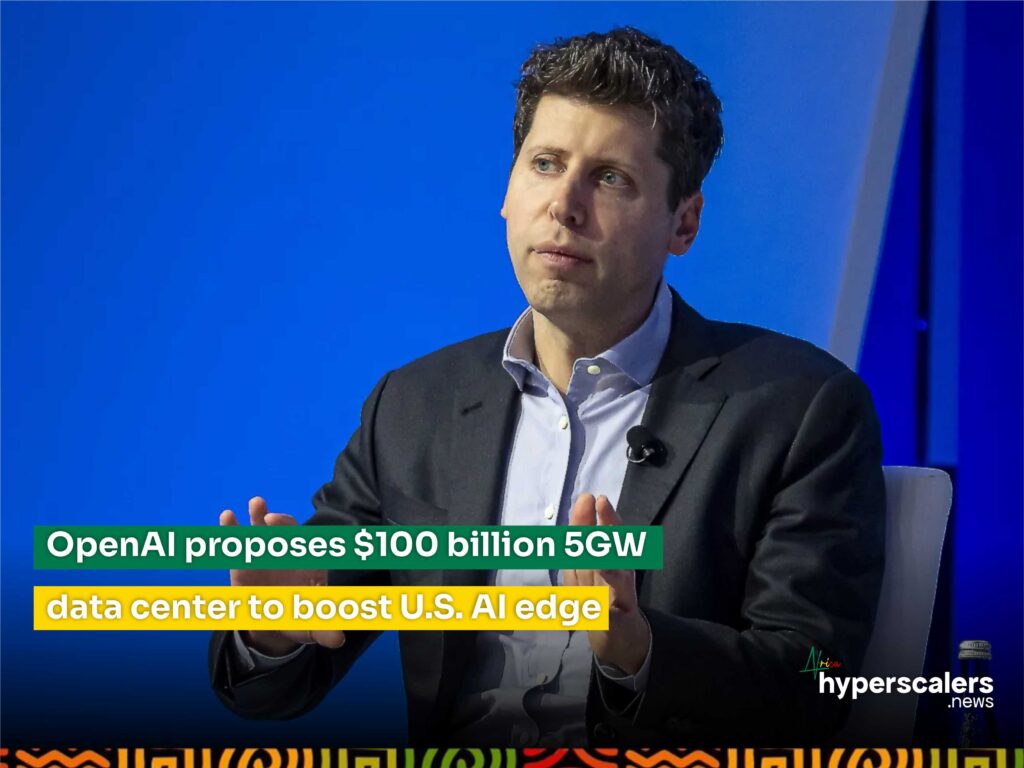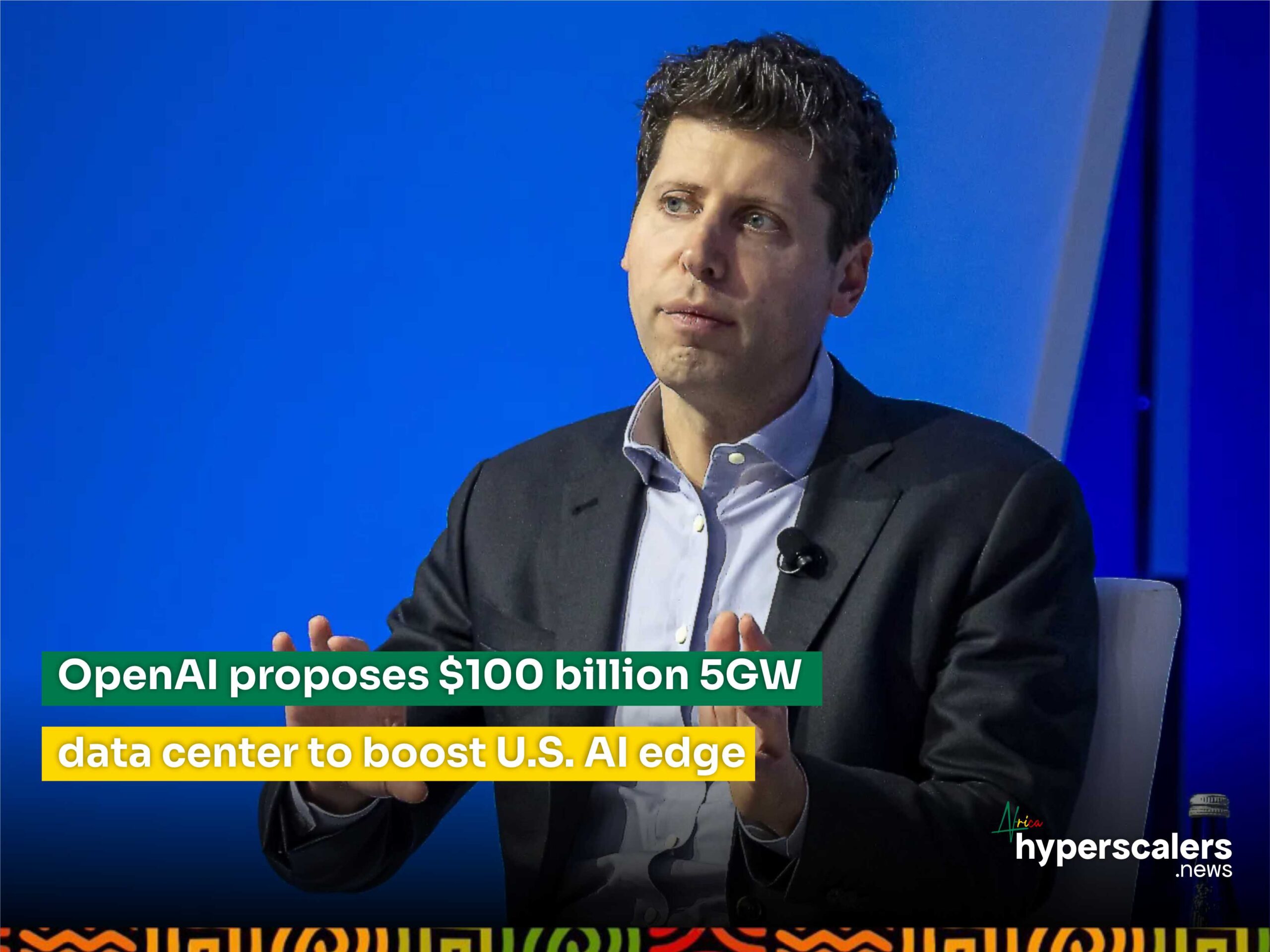In a strategic push to maintain the United States’ leadership in artificial intelligence, OpenAI has shared a detailed report with the White House and the National Telecommunications and Information Administration (NTIA) outlining its vision for a massive $100 billion, 5GW data center. The proposed facility, which OpenAI says is critical for sustaining AI development, could be the world’s largest by a significant margin and promises substantial economic benefits.
OpenAI’s internal analysis estimates that the 5GW data center would span approximately 30 million square feet (about 2.8 million square meters) and house 2 million GPUs. This scale would make it the largest data center globally, far surpassing current industry giants like Amazon Web Services (AWS) and Microsoft.
For comparison, AWS operates 38.2 million square feet (3.5 million square meters) of data center and office space worldwide, while Microsoft’s global data center capacity currently stands at 5GW, with plans to add another 2.5GW by mid-2025. Hyperscalers like AWS and Google are also working on data centers in the 1GW range, but these are typically phased projects that span multiple years.
The proposed 5GW facility would cost an estimated $100 billion to build, with an anticipated annual return of $40 billion, based on projections of the dollar’s value in 2028. The site would also generate significant employment, with OpenAI estimating 4,000 full-time employees for ongoing operations and another 14,000 workers needed for construction.
OpenAI’s report further analyzes the potential economic impact of this data center across 12 states. The data suggests that Texas would benefit the most, creating 48,279 new jobs and generating an economic impact of over $20 billion. On the other hand, West Virginia would see the least impact, with around 31,671 new jobs and an economic impact of approximately $16.2 billion.
- Arizona
- California
- Georgia
- Michigan
- Nevada
- New York
- North Carolina
- Ohio
- Pennsylvania
- Texas
- West Virginia
- Wisconsin
OpenAI’s report highlights the urgency of the United States making a strategic decision regarding its role in the future of AI. “Who will control the future of AI is the urgent question of our time,” the report states. It emphasizes that AI’s rapid progress presents a choice between advancing democratic AI models that share benefits globally or allowing countries like China—whose AI strategy is driven by centralized, autocratic values—to cement their global influence.
The report contrasts the open, democratic values that OpenAI believes should guide AI development with China’s “top-down, centralized AI infrastructure strategy,” which it argues would allow China to dominate the field and control its benefits.
OpenAI also warns of global competition for infrastructure funds, noting that $175 billion in global infrastructure investments are waiting to be allocated. “The question isn’t whether that money will be spent, but where,” the company asserts. “If we don’t channel it into infrastructure projects that will support democratic AI ecosystems around the world, the funds will flow to our global competitors.”

As OpenAI takes a more proactive approach to securing the necessary data center capacity, the company is also seeking greater government involvement and regulatory support. In a letter to the NTIA, OpenAI’s Benjamin Schwartz, Head of Infrastructure Partnerships and Policy, discussed the challenges of scaling the U.S. power grid to support AI-driven infrastructure. “Even if overall grid capacity grows by two percent annually, utilities still need to add well in excess of 100GW of peak capacity to a system that currently handles around 800GW at peak capacity,” Schwartz wrote. “The increase in power demand will also likely be hyper-localized, potentially requiring a doubling of grid capacity over the next decade in areas with a concentration of data centers.”
Schwartz, who previously worked on the U.S. CHIPS Program (a federal initiative to boost semiconductor manufacturing in the U.S.), also highlighted the need for investment in new power generation to meet the increasing energy demands of AI infrastructure. He estimates that $50 billion will be needed through 2030 to support new power generation, as the AI models of tomorrow will require massive amounts of energy to operate. “North America as a whole is expected to add ~200GW to the grid by 2030,” Schwartz noted. “The economically transformative AI models that benefit the United States and the rest of the world will use tens of GW of this additional power in coming years and may require 100GW of that power by 2030.”
OpenAI’s vision for AI infrastructure dovetails with the Biden Administration’s efforts to support AI development. This year, the White House launched a Task Force on AI Datacenter Infrastructure, with the Department of Energy stepping forward to help the sector find new power sources. However, the future of these initiatives remains uncertain, particularly with the upcoming presidential election. Former President Donald Trump, a potential contender in 2024, has expressed criticism of initiatives like the CHIPS Act and has proposed slashing government spending by trillions of dollars, potentially hindering the future of U.S. AI infrastructure projects.
Meanwhile, OpenAI is also navigating the complexities of partnerships in the AI space. The company was initially reported to be in talks with Microsoft to collaborate on the 5GW data center as part of a larger partnership. However, OpenAI has since distanced itself from Microsoft, as the two companies increasingly compete in the AI space. Microsoft, which is OpenAI’s largest investor and primary cloud provider, has faced delays in its own data center buildout, leading OpenAI to seek alternative solutions. The company is now working with Crusoe Energy, a firm building a 1GW data center in Texas, to meet its immediate infrastructure needs.
At its core, OpenAI’s proposal for a 5GW data center is about securing the U.S.’s competitive edge in the race for AI dominance. The company believes that the U.S. has a unique opportunity to lead in this transformative technology, provided it can align public and private sector efforts to build the infrastructure required. As OpenAI’s report concludes, “The infrastructure build needed to sustain the US edge on AI development is the kind of visionary undertaking for which the country is uniquely known and equipped to execute—a massive effort shaped by democratic values and designed to broadly distribute economic benefits.”
In contrast, OpenAI warns that China’s centralized approach to AI infrastructure presents a formidable challenge, one that could further entrench its influence over the global AI landscape. The question, as the company frames it, is whether the U.S. will seize the moment to shape the future of AI according to its democratic ideals—or whether other nations will set the terms.





